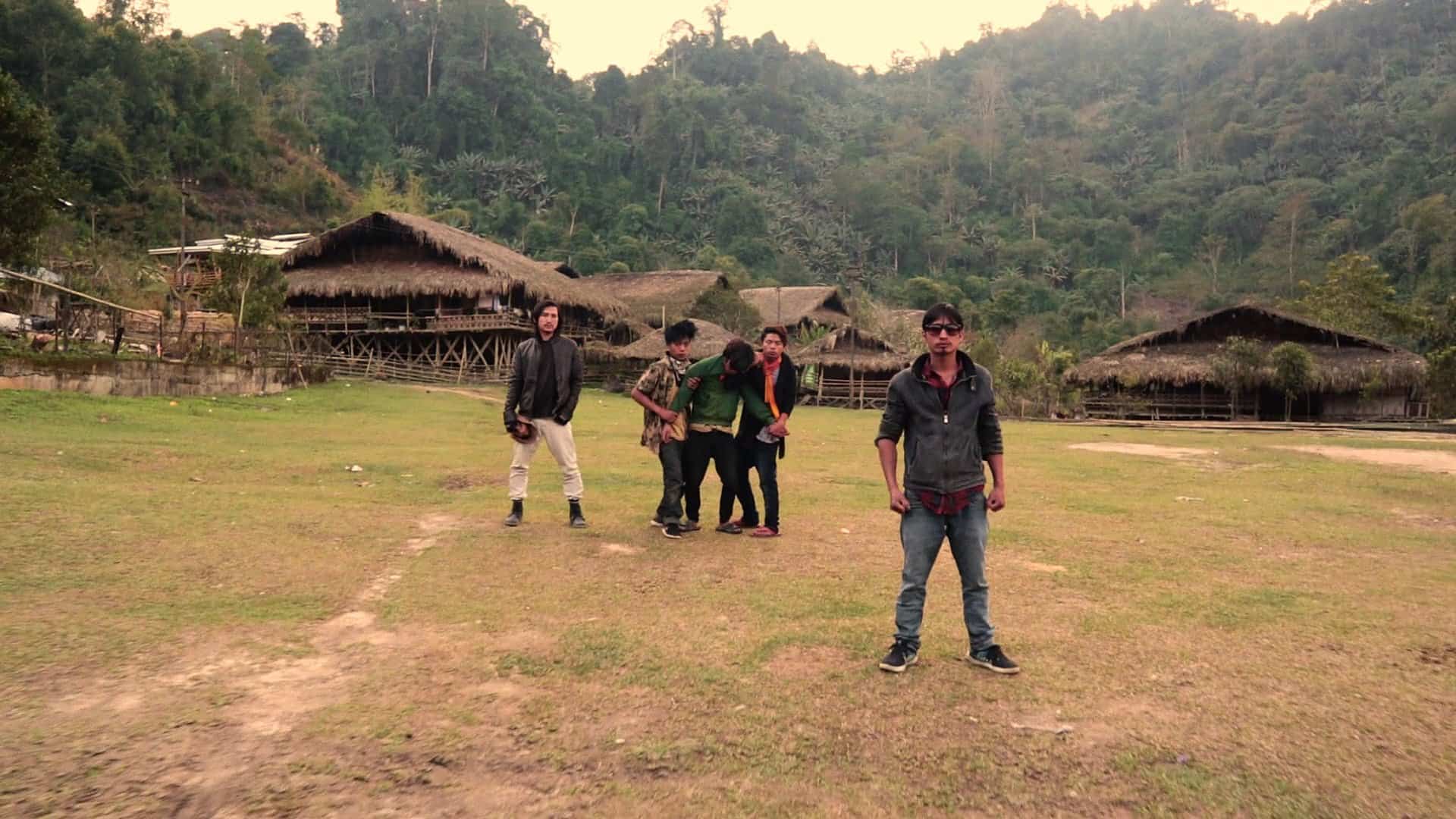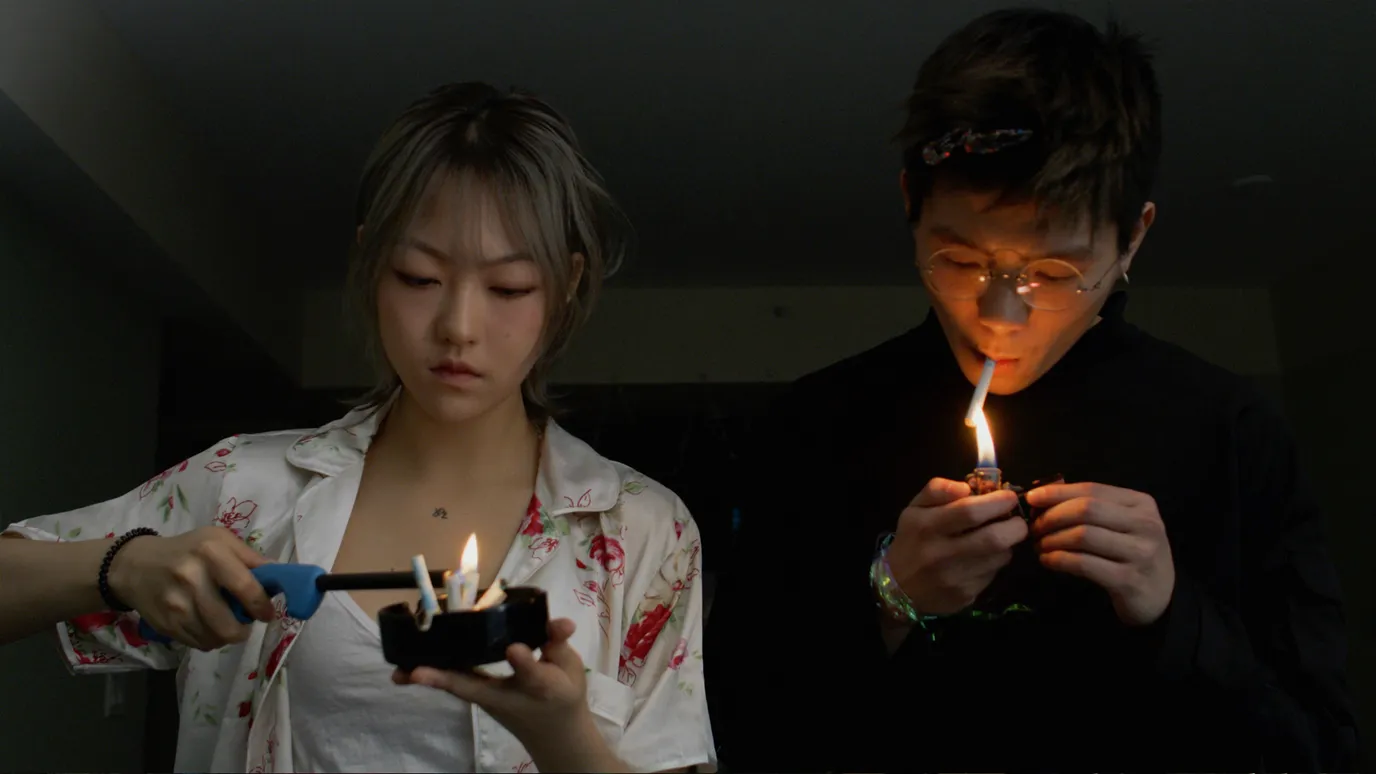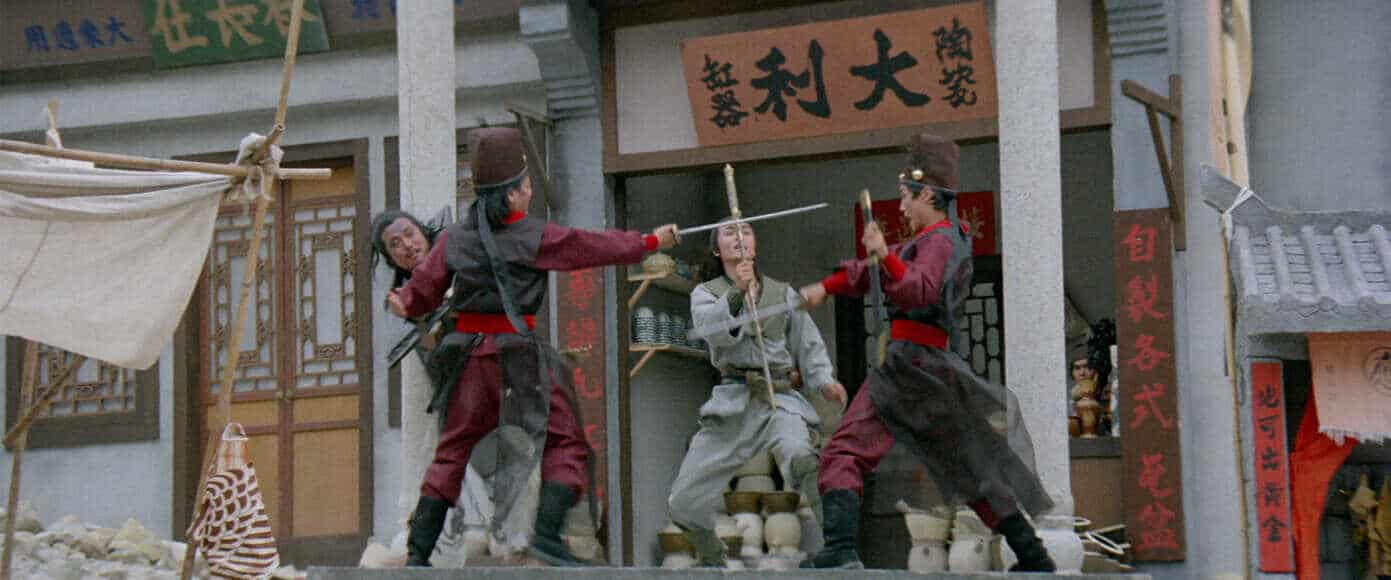“It's bad for your health thinking about revenge and killing all the time.”
Japanese director Hiroyuki Nakano had directed several music videos for artists like Tomoyasu Hotei (who also plays the part of the villain in “Samurai Fiction”), Dee-Lite and Bjork but had always wanted to make a feature film. During the shooting of a music video for drum and bass artist Photok, Nakano was reminded of the great samurai Musashi Miyamoto, who has developed his famous two sword-technique observing drummers during a village celebration. With the additional inspiration from the works of Shugoro Yamamoto, whose work had also inspired the film by Akira Kurosawa, Nakano slowly developed the idea for a modern samurai film, which would blend the ideas the samurai and the times they lived in stood for but which would also use a modern sensibility, music, editing and use of camera.
Buy This Title
The second half of the 1990s defined an interesting time for films in general, one in which “Samurai Fiction”, as Nakano's film was ultimately named, would fit right in. As author Tom Mes highlights in his review of the film, movies such as Wes Craven's “Scream” and the pop-cultural phenomenon “Pulp Fiction” as well as its director Quentin Tarantino were examples of the popular blend of different genre, techniques and narratives. With both examples playing with genre conventions, like the famous “rules to survive a slasher-film” in “Scream” or the playful intertextuality in Tarantino's films, “Samurai Fiction” was designed as a mixture of a traditional jindai-geki and chinbara (period drama and sword fight film) but also included elements of comedy and modern music, such as rock and electronic.
Motivated by his producer defining his expectation in the director's project, as a movie audience would think of as “cool” as they leave the cinema, “Samurai Fiction” is a creative blend of genre and techniques Nakano had already used and further experimented with. The result is a film about the theme of honor within the samurai code, being outcast and finding one's place within a rigid structure tolerating no weakness.

Inukai Heishirō (Mitsuru Fukikoshi) is the son of a high official for the shogun who has just returned home after having received a formal education. However, his father (Taketoshi Naitō) is still unsatisfied with the temper and impatience of his son, demanding him to find it in himself to enjoy peace and quiet, especially now that the country is at peace.
However, as a highly valued possession of the shogun, a celebratory katana, is stolen from the protection of the Inukai clan by one of their new recruits, a taciturn but also highly skilled man named Rannosuke Kazamatsuri (Tomoyasu Hotei), Heishirō wants to help his family by chasing after the thief and killing him to restore the clan's honor. Even though his father begs him to stand still and not be stupid, as his skills are not on the same level as Kazamatsuri, Heishirō does not listen. Accompanied by his loyal childhood friends Tadasuke Kurosawa (Ken Osawa) and Shintarō Suzuki (Naoyuki Fuji) he chases after the thief, but their encounter with the trained warrior does not go as they had envisioned, leaving two of them wounded and one dead. Only thanks to the intervention of Koharu Mizoguchi (Tamaki Ogawa), local farmer who is able to block all of Kazamatsuri's strikes, the survivors are able to escape the wrath of the warrior.
With Heishirō recuperating from his wounds, Kazamatsuri is set on finding the mysterious man who has been able to defend himself against his strikes and to demand a duel with him.
Maybe it is due to being a mixture of different genres, but perhaps the aspects “Samurai Fiction” succeeds in is when it truly embraces freedom as a narrative as well as an audiovisual theme within its core. In an early scene, we see Heishirō playing chess with his father who scolds him for this lack of patience and naive views on the world; even though he has been through an education and training as samurai, his son knows nothing of the world, the joys of peace and quiet, both of which have added to the family's reputation and wealth as his father repeatedly stresses and his environment confirms. The contrast between both characters could not be more apparent when his father comments on a bird's “nature” of living in a cage, domesticated and docile for visitors to look at and find amusement in while his son insists on their true freedom being in nature without any constraints, which basically defines his own dilemma of being able to prove himself in front of his father, while also seeking adventure, new experiences and starting a life on his own.
On the other hand, Rannosuke Kazamatsuri, suitably cast with musician Tomoyasu Hotei, is the embodiment of everything Heishirō wishes for himself. With the camera adding to the “iconic”-like status of the character, he is more like an enigma to the other characters and the audience alike, with scenes of him helping innocents juxtaposed to those in which he seems unreasonably cruel to people. The stoicism of his character, the unmoved expression showing a mixture of contempt and careful attention to his surroundings, complete a kind of warrior Heishirō would like to be, and is on his best way of becoming with his view of solving issues with violence rather than seeking other, less brutal solutions first. In the end, the image of Rannosuke walking on the beach with the sound of a lonely electric guitar as music in the background highlights the kind of free spirit he is, in this case one with no code to honor, no rules to stick with, other than those he has made for himself and with no agenda to follow besides being the best sword fighter. The fact he does not even know why he stole the celebratory sword in the first place emphasizes how he acts without a motive for his actions other than allowing himself the freedom of doing anything.

“Samurai Fiction” is a movie whose mentality is situated in the fine line of being respectful towards a certain tradition while also experimenting with modern ideas. The use of black and white, lighting and music as well as some minor references, such as the names of Heishirō's friends, are indicators of a way of storytelling leading back to what has come to define the genres of jindai-geki and chinbara, issues like honor, loyalty and emotional composure. The playfulness and often comedic interludes of Heishirō and his friends or Kagemura, a ninja and loyal servant to Heishirō's father, insisting on his old manners as assassin even though his age is getting in his way (“You know, you can use the door.” “Yes, but I'm used to enter a room from the ceiling after all these years.”). While these elements, especially the use of music, would seem awkward, but in the case of “Samurai Fiction” all of these aspects make for an enjoyable and interesting experience, especially when it comes to questioning the focus on death on violence within the code of the samurai whereas the more comedic scenes show how much more there is to life if one truly lives it. In the end that is truly “rock ‘n' roll”.
“Samurai Fiction” is a mixture of traditional Japanese genre mixed with many modern elements such as electronic and rock ‘n' roll music or the deconstruction of the Bushido, the code of the samurai. While it does not provide a completely new take on a the formula of the genre, its use of comedy, its characters and visuals make “Samurai Fiction” a very entertaining film. At its core it is a very enjoyable coming-of-age story about someone finding out how difficult any “easy” solution can be, what kind of repercussions one has to deal with and what honor really means. The path towards that aim might be that of a truly free spirit.
Sources:
1) Mes, Tom (2001) Samurai Fiction
www.midnighteye.com/reviews/samurai-fiction/, last accessed on: 01/20/2018
2) Nakano, Hiroyuki (1998) My Soul & Funky Music. Director's Notes on Samurai Fiction (included in the German DVD release of the film)
















